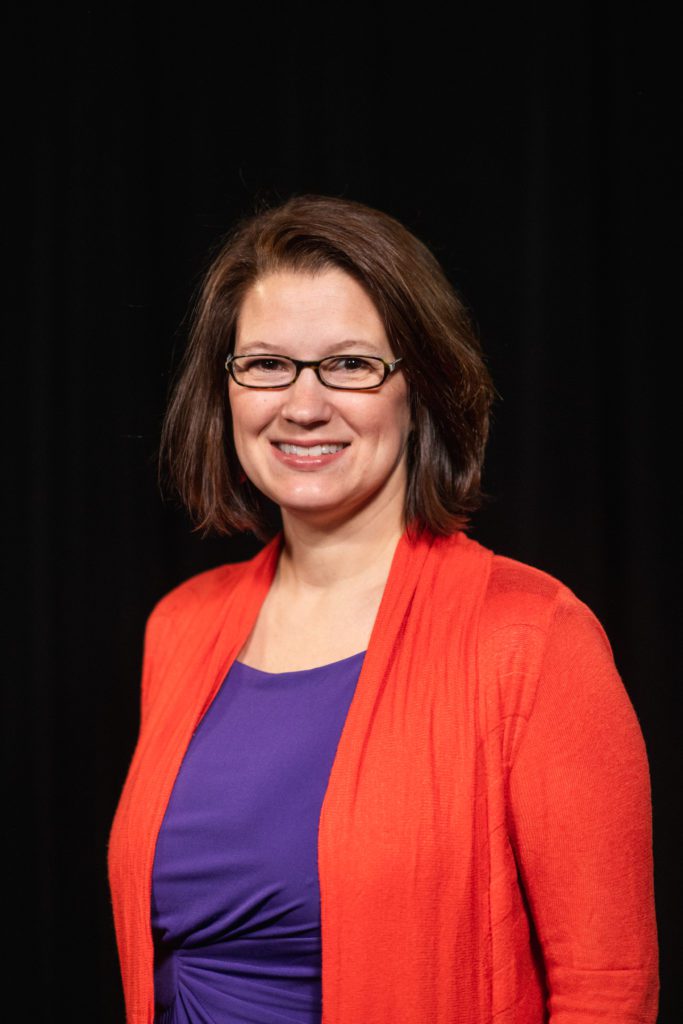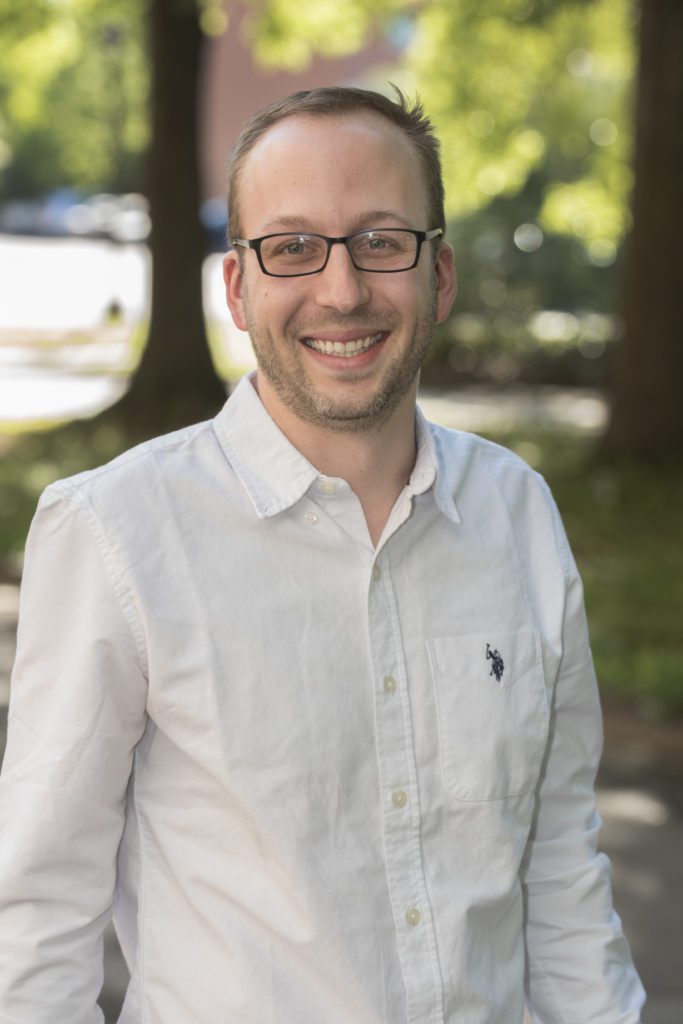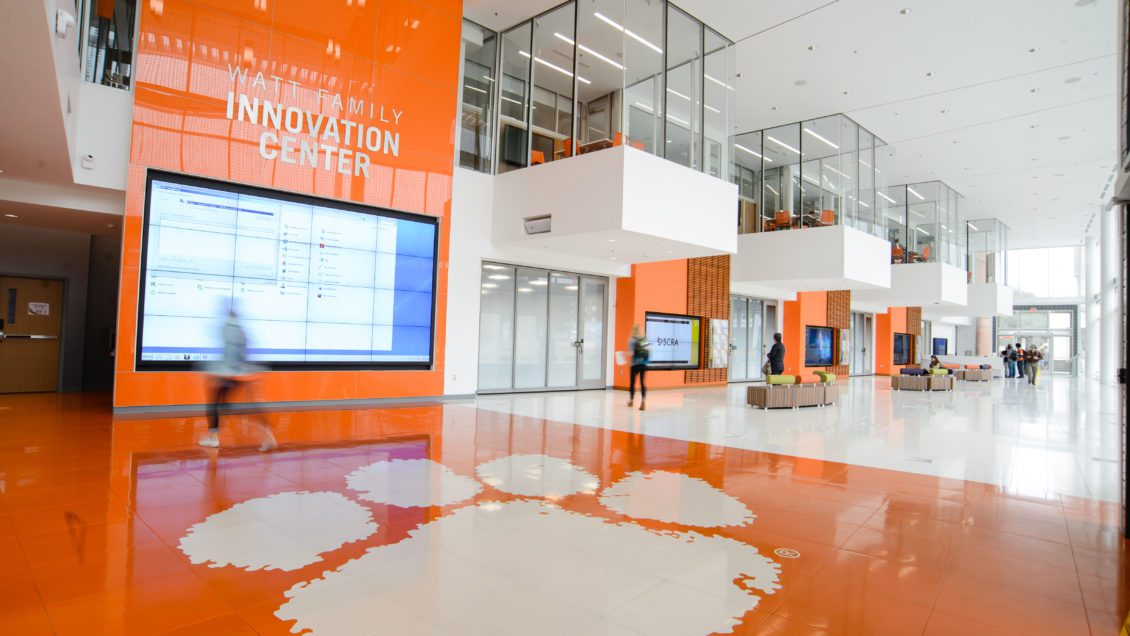This gift extends the powerful partnership between the University and SAS
Big data propels the modern world. Thanks to the generosity of analytics leader SAS, Clemson students, faculty and approved staff can harness the power of big data with SAS® software to create meaningful change.
SAS has gifted Clemson $3.3 million in licensing for teaching and academic research. In a renewal of a previous gift from 2017, SAS has committed to supporting Clemson’s mission through 2026 by providing access to a suite of programs that enhance undergraduate and graduate education, support research efforts and encourage institutional success.
Clemson’s partnership with SAS has greatly benefitted our faculty, staff and students, and I am grateful for this gift that will continue to provide them with the best software and hands-on experience.
JIM CLEMENTS, CLEMSON UNIVERSITY PRESIDENT
The company’s previous $3.5 million gift allowed professors, students and researchers to access and apply SAS analytics, business intelligence and data management software toward studies and research. SAS also provided teaching materials and on-site training for faculty and staff to help them integrate SAS into coursework and research. Additionally, uploading SAS to the Palmetto Cluster supercomputer on campus has drastically reduced processing times.
The latest gift from SAS includes access to SAS® Viya®, the company’s flagship AI, machine learning, analytics and data management platform. SAS Viya enables users to transform raw data into powerful insights. These insights will allow Clemson researchers to make sense of large data sets and explore a wide variety of critical topics, such as racial inequities in education, wildlife disease, addiction, agriculture and the human genome.
“For the past five years, gifts from SAS have provided vital support to Clemson’s undergraduate and graduate students, making a profound impact on their educational experience,” says Brian O’Rourke, vice president of Advancement. “Their renewed investment will continue to prepare our students for a thriving global marketplace. Clemson is immensely grateful for this strategic partnership with SAS and their commitment to propelling our University forward.”
The partnership between Clemson and SAS has had tremendous reach since 2017 through the Watt Family Innovation Center. With their latest investment in the University, SAS and their technologies have even more potential to create impact in classrooms, labs and on-campus organizations.
The Watt Family Innovation Center has served as the primary hub for SAS trainings, seminars and technical support. Over the next five years, the Watt Center aims to partner with Clemson Computing and Information Technology (CCIT) to educate users on SAS capabilities, assist with program onboarding and oversee SAS badge certification administration.
One of our focus areas at Clemson is multidisciplinary innovations, and we see the data analysis space as a place where multidisciplinary collaboration flourishes. Our partnership with SAS allows us to support our faculty, students and researchers with the latest tools from the industry leader.
TODD MAREK, Ph.D., EXECUTIVE DIRECTOR OF THE WATT FAMILY INNOVATION CENTER
One of the ways the SAS educational partnership benefits Clemson is by creating a competitive edge for students with a knowledge of SAS Viya and other programs. Last year, more than 143,000 job postings listed SAS as a desired skill, according to Emsi Burning Glass, an aggregator of labor market data. Undergraduate students can receive comprehensive SAS training through the STAT 4020/6020 courses. These courses are designed to prepare students for their future careers in health care, financial services, business analytics, data analysis and beyond.
“By integrating SAS into coursework, we’re bridging the gap that exists in the U.S. around literacy in data science,” says Cynthia Young, Ph.D., founding dean of the College of Science. “Our students become more competitive; our alumni are more successful, and SAS is getting more of a workforce that’s familiar with their program, understands it and knows the value of it.”
Ellen Breazel: Preparing the Next Generation of SAS Users
When Ellen Breazel was asked to teach STAT 4020 in 2017, she knew she wanted the course to benefit students beyond graduation. She began by asking former students what they thought of the course and then she wanted to know how it could be improved.

“They said, ‘We learned a lot of things but didn’t take a deep dive into any of these platforms. It would be really great if the course looked at one or two platforms in a deeper manner.’ So, I decided to start with SAS.”
STAT 4020 is a unique course at Clemson that teaches students how to operate and navigate SAS’ data analytics tool. It provides students hands-on experience working in the platform and teaches them the skills to perform complex statistical analysis.
At the end of the course, students are prepared to take the SAS certification exam, which will give them a certification badge that makes them highly valuable to graduate schools and employers. This certification exam, which typically costs $180, is available for students to take free of charge.
“It’s really opened the gateway for students not only to get exposure and learning but also to get a certification from one of the industry leaders in data science,” says Kevin James, director of the School of Mathematical and Statistical Sciences in the College of Science.
Coincidentally, Breazel’s transition into the role of course instructor was around the same time as the initial SAS gift. As she began to remodel the course curriculum, she turned to the academic division at SAS for assistance. She immediately discovered the value of the Clemson and SAS partnership.
“The people at SAS have been incredible,” she says. “They are very communicative, and if I run into any issues, they are very receptive to helping out with the courses as much as they can.”
Knowledge of SAS sets undergraduate students up for tremendous success in graduate school and the professional world. The STAT 4020 course and the free certification exam are among the benefits Clemson students receive because of the powerful partnership with SAS.
“I’m really grateful for this gift because it gives students the opportunity to work with these programs and languages before we go out into the workforce,” says Janiece Jackson, a current student in STAT 4020. “SAS is really helping me with problem-solving skills and troubleshooting. You really get the full package when you’re working with SAS.”
Brian Witrick: Unlocking the Key to Quality Care
When Brian Witrick, a fifth-year Ph.D. student, entered Clemson’s applied health research and evaluation program, he knew he would gain a greater knowledge of analytics but didn’t expect that he would create an impact on disparities of health care in the state of South Carolina.

Along with his adviser, Corey Kalbaugh, Witrick is using SAS to analyze a registry of people with peripheral artery disease to identify disparities in care. After determining where the inequalities exist, Witrick and the rest of his team will work to create intentional interventions so everyone receives quality care.
“The practical implications of using SAS on this project are pretty amazing,” says Witrick. “Utilizing SAS allows us to identify the problem and then create potential solutions and interventions.”
Peripheral artery disease is the narrowing or blockage of blood vessels in the lower extremities. It can be very painful and, in some cases, lead to amputations. To reduce the number of amputations and improve quality of care, Witrick and his team use SAS to partition this data to examine disparities in care across South Carolina.
Previously, the team has struggled with the enormity of data in their registry. It includes hundreds of thousands of observations, which means that running a single operation requires days on end — even on Witrick’s SAS program.
Luckily, Clemson’s partnership with SAS allowed Witrick to problem solve with SAS directly. With the help of SAS’ support team, the Watt Center and CCIT, he was able to get SAS uploaded to the Palmetto Cluster supercomputer on campus. This cut his data processing time from seven days to 30 hours.
“The fact that SAS’ team reached out in that capacity but then to further extend that to working with us to get it installed on the Cluster was in itself amazing. Above and beyond the gift,” Witrick says.
As he nears completion of the program, Witrick is beginning to think about next steps after receiving his doctorate. He hopes to continue working in SAS, whether it be in a post-doctorate research capacity or analyzing research in health care institutions. Either way, his work with SAS is far from over. “SAS is helping eliminate barriers in health care, but I think this gift helps eliminate barriers when it comes to access in technology,” says Witrick. “As much time as I’ve had working with SAS, it’s nice to know that there’s so much more that I could do with it. Dare I say the sky is the limit.”
Since 1976, SAS has provided analytics, business intelligence and data management software and services to help customers across the globe make sense of massive amounts of data. Their programs help researchers understand the “why?” behind large data sets and create visuals to interpret data for them. Their mission is to make it “easier for more people to use powerful analytics every day, to shorten the path from data to insight and to inspire bold new discoveries that drive progress.”
Clemson SAS users are also able to use SAS programs to make sense of ground-breaking research. Large data sets that are often used by researchers cannot be processed by typical computer analytics. Instead, it takes a program like SAS to comprehend and translate the data into meaningful deductions. This allows Clemson researchers to reach conclusions and develop solutions more effectively than they could using software other than SAS.
Clemson University aims to align with industry leaders, and SAS represents the best there is in data analytics, business intelligence and data management. Both SAS and Clemson are committed partners and look forward to the opportunities that lie ahead for faculty and students.
Get in touch and we will connect you with the author or another expert.
Or email us at news@clemson.edu

